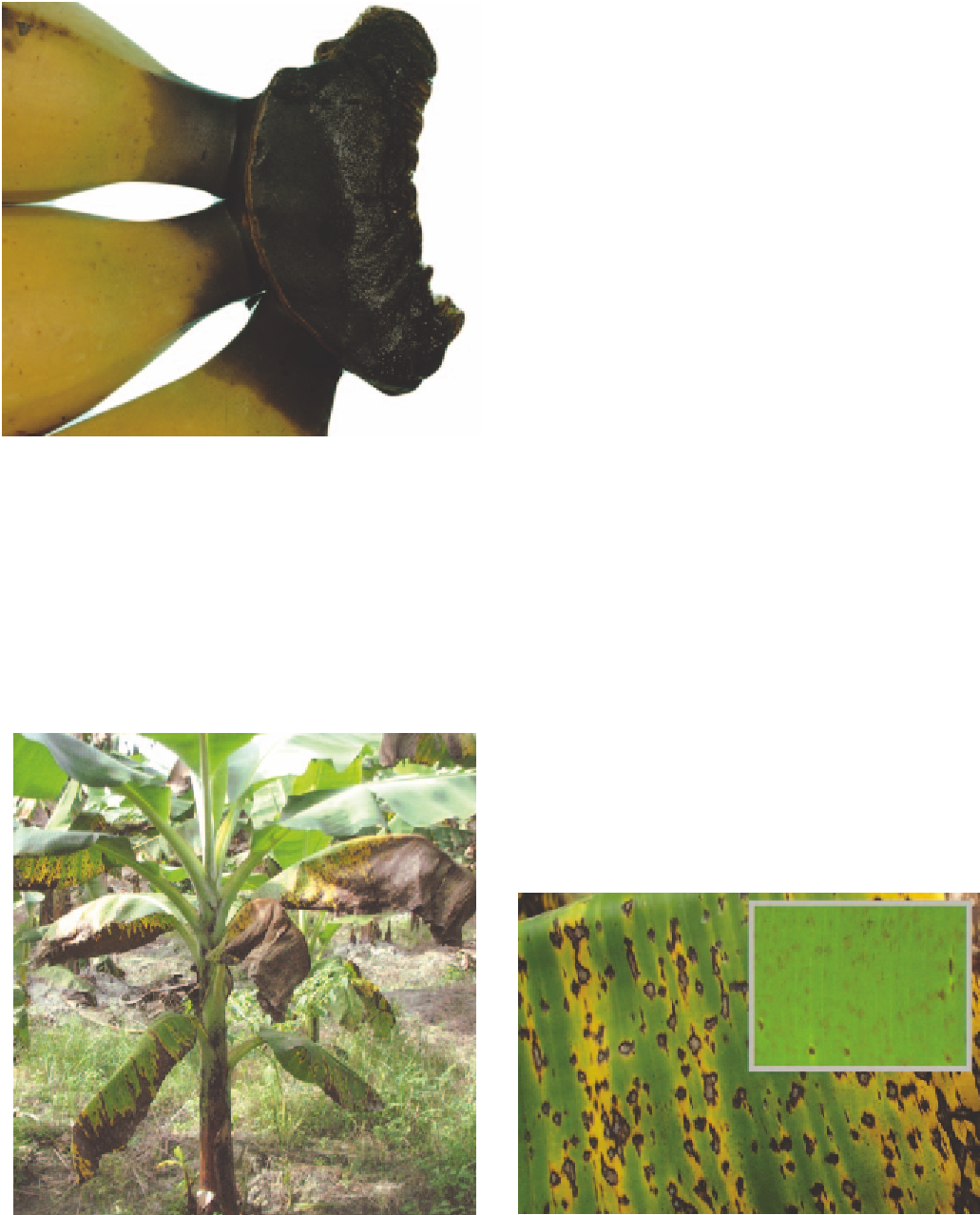Agriculture Reference
In-Depth Information
Importance
Crown rot is the most serious of postharvest diseases, but
can be controlled by fungicide treatment. The disease is
most prevalent during the spring months, but can occur
at any time of the year. Significant losses can occur if fruit
is stored for long periods before ripening.
Management
•
Cut crown cleanly from bunch stalk, because jagged
edges that die provide an entry point for fungi.
Leave a large amount of crown tissue with the fruit
to reduce the chances of fi nger-stalk infection.
•
Dip or spray fruit with a recommended fungicide.
•
Handle fruit carefully after harvest.
•
Keep packing sheds free from rotting fruit and banana
trash.
•
Fig 5.23 A hand of bananas shows symptoms of crown rot.
EUMUSAE LEAF SPOT - BIOSECURITY THREAT
Cause
The fungus
Mycosphaerella eumusae
.
(
Mycosphaerella musicola
) and Phaeoseptoria leaf spot
(
Phaeoseptoria musae
). Mature spots are used in differential
diagnosis, because ELS lesions are larger and more oval or
elliptical; yellow and black Sigatoka lesions are smaller and
narrower. As seen for black and yellow Sigatoka, high
infection levels cause large dead areas or leaf collapse.
Symptoms
Symptoms of Eumusae leaf spot (ELS) are very similar to
black Sigatoka (
Mycosphaerella fijiensis
), yellow Sigatoka
Source of infection and spread
Little information is available about the disease cycle or
spread. It is expected that spread and infection are
similar to black Sigatoka and favoured by wet, windy
weather. The fungus is likely to be spread to new areas
when infected leaves and sword suckers are transported.
Fig 5.25 Eumusae leaf spot on banana. Inset: early lesions.
Fig 5.24 Eumusae leaf spot can look similar to Sigatoka leaf spot.













